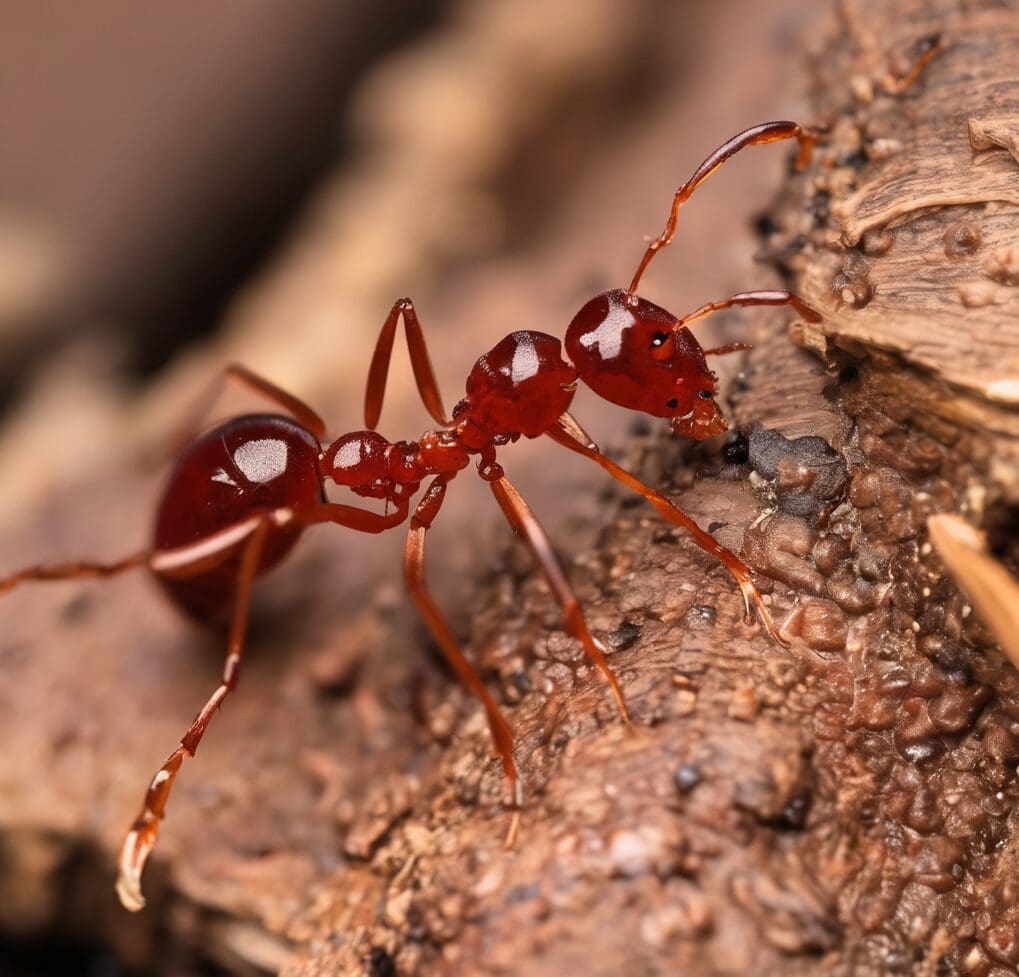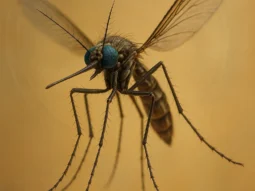
In the warm, humid climates of the Southern United States, homeowners often find themselves at war with a variety of pests that can invade their peace and cause significant damage. Among these, certain species stand out not just for their presence, but for the havoc they wreak. Termites, particularly the subterranean, drywood, and Formosan types, top this list with their appetite for destruction. These tiny invaders are more than a nuisance; they're a threat to the very structure of your home.
Understanding the behavior and impact of these pests is crucial for effective control and prevention. Subterranean termites, for instance, can form colonies of up to a million members, consuming 15 pounds of wood weekly. This insatiable hunger leads to 95% of termite damage in North America, highlighting the need for vigilant pest control measures. As you navigate the challenges of keeping your home pest-free, knowledge is your best defense. Let's delve into the world of these common pests and explore strategies to protect your Southern haven.
Common Pests in the Southern United States
Identifying the Most Troublesome Pests
In the diverse ecosystem of the Southern United States, various pests vie for the title of most troublesome, impacting homes and businesses alike. Among these, termites stand out due to their destructive potential, previously discussed. However, several other pests require equal vigilance.
- Silverfish and firebrats thrive in the humid climates of the South, targeting paper products and textiles, thus endangering valuable belongings and commercial goods. These pests, measuring about half an inch, excluding their long antennae and filaments, feed on starches and flour, often found wreaking havoc in pantries and storerooms.
- Mud Daubers, distinctive for their long slender waists and metallic coloring, pose less of a threat to human safety but can be a nuisance due to their mud nests attached to exterior walls and eaves. Managing their presence involves the simple act of knocking down the dry mud nests and cleaning the residue to prevent reinfestation.
- The Carolina paper wasp, known for its large size and orange color, prefers building nests in sheltered areas, creating potential risks for unexpected stings.
- Common landscape pests like the drugstore beetle reflect the intricate relationship between pests and their environment. Effective pest control often hinges on understanding these connections, especially the influence of excessive mulch and abundant vegetation near structures, which can harbor and attract a variety of pests.
Regional Differences in Pest Populations
Pest populations in the Southern United States exhibit significant regional differences, influenced by the area's diverse climates and habitats. Coastal areas might struggle more with moisture-loving pests such as silverfish, while inland regions could see higher activity from termites and wasps due to drier conditions favoring their nesting habits. For instance, properties closer to natural water bodies might encounter a larger variety of moisture pests, requiring tailored pest control strategies.
Moreover, urbanization plays a crucial role in determining the type of pests prevalent in certain areas. Dense urban areas can become hotspots for pests like silverfish that thrive on paper and damp conditions found in older buildings, while suburban and rural areas might battle more with landscape pests that thrive in garden mulch and vegetation.
Understanding these regional differences is crucial for implementing effective pest control measures. Tailoring pest management strategies to the specific challenges of each area ensures more effective control and prevention, safeguarding homes and businesses from the diverse array of pests present in the Southern United States.
The Threat of Invasive Species
The Southern United States faces unique challenges due to the threat of invasive species, each requiring specific pest control measures. Climatic conditions, combined with abundant natural habitats, make this region particularly inviting for a variety of pests. Understanding the behavior and biology of these invasive species is crucial for implementing effective control strategies to protect your home and health.
Managing Ant Infestations
Ants are a common nuisance in the Southern states, thriving in the warm and humid climate. Identifying the type of ant is the first step in addressing an infestation, as each species has its own lifestyle and nesting preferences. The most effective method against ants involves insecticidal baits. These baits exploit the ants' social nature, as workers carry the bait back to the nest, effectively eliminating the colony from within. Regular monitoring and maintenance of the surrounding area can also deter new colonies from establishing.
Strategies Against Cockroach Proliferation
Cockroach proliferation poses a significant health risk, as these pests are known carriers of various pathogens. They flourish in the warm, moist environments commonly found in the Southern United States. An integrated pest management approach is essential for controlling cockroach populations. This includes proper sanitation to eliminate food and water sources, sealing cracks and crevices to remove harborage sites, and the strategic use of baits and residual insecticides. Regular inspections and swift action at the first sign of cockroaches can prevent an infestation from becoming unmanageable.
The Challenge of Termite Damage
Termites, particularly the subterranean species prevalent in the South, pose a substantial risk to structures due to their wood-consuming habits. Protecting your property from termites requires a thorough understanding of their behavior. Termites thrive in moist conditions, often entering homes through soil contact or wood that touches the ground. Pre-treatment during construction, regular inspections for signs of termite activity, and the installation of bait stations around the perimeter of your home can offer significant protection. In cases of active infestations, professional treatment, such as soil treatments, baits, or structural fumigation, may be necessary. Early detection and treatment are key to minimizing the damage caused by these destructive pests.
Seasonal Pests and How to Deal With Them
In the Southern United States, understanding the seasonal shifts in pest behavior is crucial for maintaining a pest-free home. With each season, specific pests emerge as prominent threats, requiring targeted management strategies. Here's how to deal with these seasonal invaders effectively.
Summer Stingers: Bees and Wasps
During the warm summer months, bees and wasps become increasingly active. These insects, while beneficial for the environment, can pose risks when they build nests near or within your home. To manage these summer stingers, regularly inspect the perimeter of your home for nests. If you encounter a nest, maintain a safe distance and avoid disturbing it. Professional removal is often the safest and most effective way to handle bee and wasp nests, especially if you or family members are allergic to stings. Additionally, keep outdoor eating areas clean, cover food containers tightly, and use wasp traps to minimize encounters with these insects during summer gatherings.
Winter Invaders: Rodents and Spiders
As temperatures drop, rodents and spiders seek refuge inside homes, making them common winter invaders in the Southern United States. To deter these pests, seal cracks and crevices on the exterior of your home, including gaps around windows and doors. Store food in airtight containers and keep your home clean to make it less appealing to rodents looking for shelter and food. For spiders, reduce clutter and vacuum regularly to remove webs and discourage their presence. If you notice signs of rodent activity, such as droppings or gnawed packaging, setting traps can be effective. However, consider consulting a pest control professional for severe infestations to ensure comprehensive and humane pest management.
By taking proactive measures based on the season, you can significantly reduce the likelihood of pest invasions in your home. Remember, professional pest control services offer tailored solutions and peace of mind when dealing with these common southern invaders.
Moisture-Loving Pests and Related Damage
In the humid climates of the Southern United States, moisture-loving pests pose a significant threat to homes and structures. Understanding the problems caused by wood decay, fungi, and how to control pests in areas with high humidity is crucial for maintaining the integrity of your home and ensuring a healthy living environment.
Problems Caused by Wood Decay and Fungi
Wood decay and fungi thrive in moist environments, creating a conducive habitat for pests that can cause extensive damage to buildings. Termites and carpenter ants, for instance, are attracted to wood weakened by fungi, making it easier for these pests to establish colonies and further degrade the structure. Fungi itself can compromise the structural integrity of wood, leading to costly repairs. In the Southern United States, the combination of warm temperatures and high humidity accelerates the growth of fungi, exacerbating the problem. Regular inspections for signs of moisture intrusion, wood decay, and fungi are essential in preventing widespread damage and deterring pests drawn to these conditions.
Controlling Pests in High Humidity Areas
Managing pests in areas with high humidity starts with addressing the root cause: excess moisture. Ensure your home has adequate ventilation, especially in attics, crawlspaces, and basements, to reduce humidity levels. Repairing leaks in roofs, pipes, and faucets promptly prevents moisture accumulation, which attracts pests. Installing dehumidifiers in particularly damp areas of your home can also help control moisture levels.
For areas prone to standing water, such as yards with poor drainage, take measures to improve drainage or redesign landscaping to prevent water accumulation near your home's foundation. Properly functioning gutters and downspouts that direct water away from the home are critical in preventing moisture buildup.
Regular pest inspections allow early detection of moisture-loving pests like termites and silverfish, enabling timely intervention before infestations become severe. Consider professional pest control services that specialize in moisture pest management for the most effective prevention and treatment options.
In the Southern United States, combating moisture-loving pests demands a multifaceted approach that includes moisture control, structural maintenance, and professional pest management. By taking proactive steps to manage moisture and humidity in and around your home, you're creating a less inviting environment for pests and protecting your investment from the damaging effects of wood decay, fungi, and pest infestations.
Prevention and Control Methods
Given the diverse ecosystem in the Southern United States, effective pest control is crucial for protecting your home from the damages pests can cause. This section covers key strategies for maintaining a pest-free environment, including home maintenance practices, natural pest management methods, and the pivotal moments when seeking professional pest control becomes necessary.
The Role of Home Maintenance in Pest Prevention
Maintaining your home is your first line of defense against pests. Regular home maintenance tasks play a significant role in keeping pests at bay. Seal up any cracks or openings on the exterior of your house, including gaps around windows, doors, and utility pipes, to block entry points for pests. Ensuring your attic and crawl spaces are well-ventilated reduces moisture build-up, deterring moisture-loving pests. Additionally, fix leaky faucets and water pipes promptly, as standing water attracts pests like termites and mosquitoes. Clearing debris from gutters and downspouts also prevents water accumulation near your foundation. Lastly, trimming overhanging branches can stop pests from accessing your roof and entering your home.
Natural Methods for Managing Pests
Incorporating natural pest management methods can effectively reduce pest populations without the use of harsh chemicals. Introducing beneficial predators, such as ladybugs to control aphids in your garden, can help maintain a balanced ecosystem. Planting pest-repellent herbs and flowers, like lavender, marigolds, and basil, around your home's perimeter can naturally deter various pests. Diatomaceous earth, a non-toxic powder made from crushed fossilized algae, is effective against insects with exoskeletons, such as ants and cockroaches, when sprinkled in problem areas. Ensure proper sanitation by keeping your kitchen clean, storing food in sealed containers, and managing waste and compost bins to not attract pests.
When to Consider Professional Pest Control Services
While preventive measures and natural remedies play a critical role in pest management, there are situations when professional pest control services are necessary. If you're dealing with a persistent or large-scale infestation, it's time to call in the experts. Professionals possess the knowledge, experience, and tools to quickly and safely eliminate pests. They can also provide customized solutions tailored to your specific situation and the type of pests you're dealing with. Additionally, professional services can offer preventive treatments to protect your home from future infestations. If you're unsure about the extent of your pest problem or how to tackle it, consulting with a pest control professional can provide peace of mind and effective solutions.
Preventing pests in the Southern United States requires a multifaceted approach involving regular home maintenance, the use of natural deterrents, and recognizing when professional intervention is needed. Adopting these strategies can help you maintain a safe, comfortable, and pest-free home.
Romex Pest Control: Your Southern Pest Control Specialists
In the battle against common pests in the Southern United States, Romex Pest Control emerges as a leading specialist, equipped to tackle the unique challenges these pests present. With a deep understanding of the behavior and habitats of a wide range of pests, including termites, ants, cockroaches, and the like, Romex utilizes expert techniques tailored to the Southern climate and ecosystems.
Understanding Southern Pests
Recognizing the significance of climate in pest activity, Romex focuses on pests thriving in humidity, such as termites and wood-decaying fungi, which are rampant in the South. Termites alone, with around 2,800 different species recognized, pose a severe risk to structures, necessitating a targeted approach to their control. Romex's strategies extend beyond termites, tackling moisture-loving pests that contribute to wood decay and fungal growth, ensuring your home remains safe and pest-free.
Advanced Control Methods
Romex employs a mixture of advanced control methods to address the broad spectrum of pests in the South effectively. From sealing entry points to employing natural deterrents and maintaining proper ventilation, each strategy is executed with precision. For persistent pest problems, Romex's professional intervention offers an additional layer of protection, using scientifically-backed solutions to eradicate infestations and prevent future occurrences.
Expertise in Regional Pests
With specific expertise in regional pest challenges, such as the invasive species like the Norway rat and the roof rat, which spread dangerous diseases and cause significant property damage, Romex is adept at managing these threats. Their knowledge extends to controlling pests like silverfish, which damage paper products and textiles, ensuring comprehensive protection for your home.
By combining regular maintenance, natural remedies, and professional services, Romex Pest Control stands as your expert ally in maintaining a pest-free environment in the Southern United States. Trust in their specialized knowledge and tailored approaches for effective pest control solutions that keep your home and health guarded against common and invasive pests alike.
Conclusion
Tackling pests in the Southern United States requires a keen understanding of their unique behaviors and the challenges posed by the climate. With Romex Pest Control's expertise, you're not just addressing the symptoms but targeting the root causes of infestations. Their comprehensive approach combines maintenance, natural solutions, and professional interventions to ensure your home remains a no-go zone for pests. Whether it's the stealthy termites, relentless ants, or stubborn cockroaches, Romex has you covered. Protect your space today and enjoy the peace of mind that comes with a pest-free environment.
We hope you enjoy these informational articles. If you'd like to learn more about our eco-friendly pest control services, call (844) 955-2447.
Read More
Your Path to a Pest-Free Home or Business
Romex Pest Control
We are committed to protecting you, your children, and your pets with our eco-friendly, child-friendly, and pet-friendly guaranteed pest control solutions.
Romex Pest Control is fully insured and licensed in Texas, Oklahoma, Louisiana, and Mississippi.
Service Areas:
Hours
M-F 8 am–5 pm
Sat 8 am–2 pm
Sun Closed
Established 2016 © Copyright 2025 Romex Pest Control










